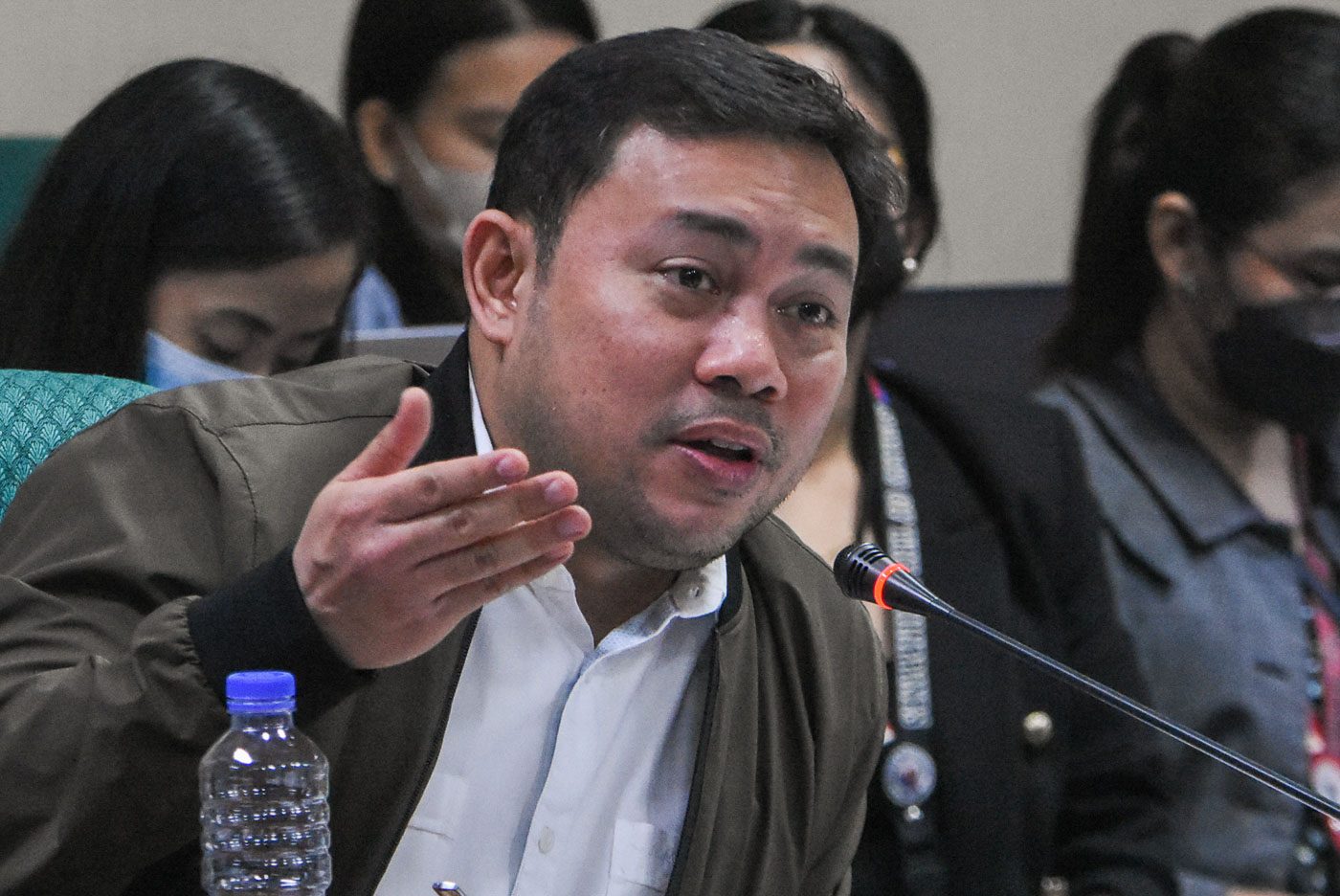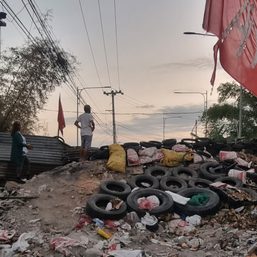SUMMARY
This is AI generated summarization, which may have errors. For context, always refer to the full article.

MANILA, Philippines – The Maharlika Investment Fund (MIF) proposal faced renewed questions about its funding sources, effectivity, and safeguards as deliberations began in the Senate Wednesday, February 1.

During the controversial sovereign wealth fund’s (SWF) first Senate public hearing, senators questioned whether establishing a SWF would truly be necessary, given the country’s current economic situation and the existing tools it already has for investment and development.
Read through our comprehensive coverage of the hearing as it happened here.
Reducing debt
“The Philippines has a high level of debt-financed programs, and no new sources of funds have come into consideration since the MIF discussions started. And because instead of paying debt, we are putting up a SWF, in effect, the Philippines is borrowing the money for the SWF. We should perhaps call it a sovereign liability fund as it is effectively funded by liabilities,” Senator Risa Hontiveros said in the hearing, quoting a former bank president.
To this, National Treasurer Rosalina De Leon came to the MIF’s defense, explaining that a sovereign wealth fund could help reduce the country’s reliance on debt.
“We were looking into this fund to attract more equity because then investors will have long-term placements in the fund, and at the same time, share in the risk in the fund.”
Instead of the national government borrowing for development projects, De Leon said that global co-investors could invest their money through the MIF and share in the risks and rewards. She referred to the success of the Indonesia Investment Authority (INA), Indonesia’s first sovereign wealth fund, as the template the Philippines could emulate.
However, this hope that the establishment of the MIF could attract lucrative investments and consequently lower the country’s debt was among the fund’s many promises that senators challenged.
For instance, Hontiveros pointed out that the Philippines does not currently have an attractive investment portfolio of oil and mineral wealth, unlike the Indonesian SWF. Instead, it only has its relatively modest initial capital of P75 billion sourced from the coffers of government banks.
Still, De Leon maintained that there was strong interest in the fund from global investors. After the World Economic Forum at Davos, the Department of Finance went on a roadshow pitching the Maharlika fund to other investors. De Leon said that there was “good reception,” but that investors were waiting for the legislation to pass to know more about how they can participate in the fund.
De Leon said it was possible for the MIF to quadruple in capital once it is opened to investors. This was based on the growth of Indonesia’s SWF, which started with an initial capitalization of $5 billion and has risen in value to $20 billion with commitments and pledges from other sovereign wealth funds and global investors.
Finance Secretary Benjamin Diokno also said that the government could sell unused or underutilized assets, such as the Caliraya hydropower plant. The government also owns a building in New York and four properties in Japan that they could consider selling.
Diokno also regretted that the proceeds from the extraction of natural resources from the Malampaya gas field were wasted when it could have been used for a SWF.
“The Malampaya proceeds, that’s around P20 billion e. Nasayang lang po ‘yun. Kung saan-saan napunta po ‘yun. Sana nagamit natin for the wealth fund. (We missed an opportunity. The proceeds were wasted. We could have invested it for the wealth fund),” he said.
He also eyed using proceeds from the royalty of the now-reopening mining sector to bolster the Maharlika fund.
MIF’s added value
Senators also questioned what advantage the Maharlika fund provided when the national budget and other existing government financial institutions (GFI) could already be used to finance development projects.
Finance Assistant Secretary Eufrocinio Bernabe Jr. gave the example that if the MIF were allowed to invest in toll roads like the North Luzon Expressway, the fund could earn as much as P16 million a day.
However, Hontiveros pointed out that it’d still be possible to pursue lucrative development projects even without creating a new entity like a sovereign wealth fund. Representatives from both the Land Bank of the Philippines (LBP) and Development Bank of the Philippines (DBP) confirmed that they could theoretically invest in a project like a toll road.
Diokno explained that the purpose of creating the Maharlika fund is to widen the options available to the government.
“When you have a fund like this, and we’re thinking of funding huge, large infrastructure projects – for example if you’re thinking of building a subway – instead of borrowing money from Japan, you can use this fund to invest in this particular undertaking.”
He also noted that relying on funding from the government can delay projects because funds may be disbursed in limited amounts over many years – or funding may be cut altogether.
“Kung dedicated ‘yung Maharlika fund for huge projects na ganun, mas madali pong magagawa. For example, mag-aallocate kami ng P1 billion for a project. Pag dating nang Congress, i-cucut ng Congress,” he said.
(If the Maharlika fund is dedicated for huge projects like that, we can move faster. For example, let’s say we allocate P1 billion for a project. When it gets to Congress, Congress just cuts it.)
Aside from the issue of added value, Senator Chiz Escudero also noted that the law should be further clarified to show how LBP and DBP will earn from their investments in the fund, given that the bill is silent on whether they get a share of the fund’s profit.
“Parang pinuwersa mo ‘yung dalawang bangko, even PAGCOR, to give money. Wala akong nakita sa bill na may share sila on their investment,” he said.
(It’s as if you’re forcing the two banks, even PAGCOR, to give money. I didn’t see anything in the bill saying that they have a share on their investment.)
De Leon agreed that the bill needed to be more explicit, but she explained that a part of the fund’s profits will be given to Landbank and DBP.
Once those have been paid, 25% of the excess profit will go to social services. The other 75% will be reinvested into the fund as retained earnings.
Exemptions and safeguards
Escudero also wondered why the MIF should be exempted from the oversight of the Governance Commission for GOCCs (GCG).
“If you really want this MIF to succeed, the more heads that are participating in crafting policies and being a part of it, I think it would be better and best than simply coming from one group all obeying the command and will of the President because they’re all co-terminus with the President and serve at his pleasure, unlike the GCG,” Escudero said.
Escudero also cautioned that the tax exemptions given to the Maharlika fund – which neither the LBP or DBP currently enjoy – could “wreak havoc.” Not only would it create difficulties in paperwork, but it could also open a loophole for abuse.
“It will be a gaping loophole insofar as entities selling to the MIF, MIC is considered because they will claim its sold to them even if it’s not and then claim the exemption,” he said.
There were also concerns that regulatory exemptions for the LBP and DBP may give them an unfair advantage over other private banks.
However, the DBP clarified that unless they were exempted from complying with regulatory ratios, they could only invest P400 million.
“Without the relief, we can only invest P400 million at this time. The regulatory relief will remove the investment in the MIF from the computation of our risk-based capital adequacy ratio,” a representative from the DBP said. “Without the regulatory relief, if we put in the investment that is being asked of us, then we will breach the regulatory ratios.”
When it came to safeguards, senators also doubted whether the promise of simply finding the “best and brightest” to manage the fund was enough to protect it.
“Aside from what Secretary Diokno said – and I agree with him – that we appoint the best possible individuals with the best possible reputation, so you have their reputational collateral as an additional safeguard, pero ano po ‘yung in addition to that? Because ‘yung binaggit po na (but what do we have in addition to that? Because these) fiduciary duties, that’s present in a lot of corporations, and yet we see a lot of corporate misdeeds,” Senator Sonny Angara said.
Even after being assured that the MIF will be reviewed by several layers of audit, Senator Joel Villanueva was unconvinced, pointing to how the Philippine Amusement and Gaming Corporation (PAGCOR) had circumvented audit safeguards.
“‘Yung PAGCOR got a third-party auditor, external auditor, spent P6 billion, hindi makita kung nasaan ‘yung office. Sabi accredited by international bodies, pero wala. Tapos merong bangko nagcertify na OK siya, pero ‘yung bangko na ‘yun, ni hindi registered dito sa Pilipinas,” he said.
(PAGCOR got a third-party auditor, external auditor, spent P6 billion, and then we couldn’t even find their office. They claimed they’re accredited by international bodies, but there’s nothing. And then a bank supposedly certified that they’re OK, but that bank wasn’t even registered in the Philippines.)
Introduced only in late November, the Maharlika fund proposal steamrolled past the House of Reprsentative on December 15, 2022, after Marcos certified it as urgent. Zubiri now estimated that the Senate could pass the measure after the Holy Week break.
The Maharlika fund proposal, which cleared the lower chamber in only 17 days, is expected to go through several more Senate committee hearings. – Rappler.com
Add a comment
How does this make you feel?







There are no comments yet. Add your comment to start the conversation.